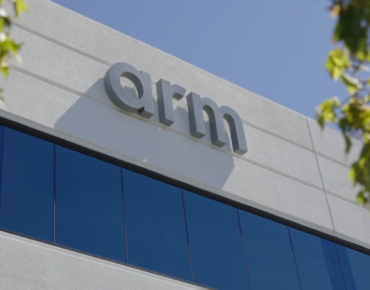Arm Aims to Be at the Center of Increasingly Diverse Datacenter

Arm’s been riding high on the mobile market for decades now, but has struggled to make its mark on servers. But the company hopes to reverse that with some new initiatives that Arm executives addressed at the recent Arm DevSummit held last week.
The top initiative revolves around providing programming and design tools so its chip designs can provide the fastest answers to solve complex problems without worrying about the hardware on which it is executed.
Arm is taking a long-term view that accelerators that include GPUs and neural processors will play a big role in computing, with CPUs based on Armv9 architecture facilitating the distribution of workloads in computers.
“In the modern world with increasingly diverse compute requirements, we believe specialized processing is the new standard bearer that will enable us to move beyond the faster, better, cheaper track of general-purpose computing,” said Gary Campbell, executive vice president of central engineering at Arm, during a keynote that was streamed.
Arm historically has been focused on its CPU technology, and 230 billion chips have shipped over the last 31 years in smartphones, embedded devices, and to a lesser extent, PCs and servers. But Arm is now breaking through in the mainstream enterprise computing environments.
Developers want to write their application code and compile it so that it will work without explicitly having to specify a chip at which to redirect a workload, said Mark Hambleton, vice president of open-source software.
In a keynote at Arm DevSummit, Hambleton said: “we observed from the server space that a tight adherence to standards meant operating systems would land on any server, from old to new, and just work, year-in, year-out. Arm servers already work this way.”
That will result in savings in cost and time, “faster innovation, better portability, and perhaps most importantly, everything just works,” Hambleton said in his keynote.
The concept of diverse computing environments with a multitude of chips is not new. Arm licensees, most notably Nvidia and Intel, have parallel programming software tools that automatically distribute computing to relevant chips.
But having all major known chipmakers as clients puts Arm in a bind as it cannot release its own specialized software framework or show bias toward a specific client.
Like with Linux, Arm’s software efforts revolve around upstreaming code in the Linux kernel and working with open-source consortiums like CNCF, Linaro and Linux Foundation. Hardware customers can take Arm’s tools and tweak them to their needs. For example, Nvidia has placed its CPU roadmap squarely on Arm architecture and it is modifying its CUDA parallel programming framework to fit its long-term Arm plans.
Arm seems to be reversing a decade-long struggle to break into the server market, mainly through Arm-based server chips offered by Ampere Computing. Oracle, Microsoft and Google are now offering virtual machine instances running on Arm processors for cloud-native applications. Amazon has built the Graviton3 chip based on Arm architecture.
Arm is also pushing coding tools through a program called Works on Arm, which is now available through all major cloud providers, and bare-metal providers like Equinix. Developers can write and test applications specific to those computing environments. Arm also has its own virtual hardware environment in the cloud where developers can prototype applications ahead of mass deployment.
The company’s datacenter roadmap includes high-performance computing chip designs called Neoverse V2, codenamed Demeter, and its successor, which is codenamed Poseidon, which will incrementally support new technologies. The new chip designs will support the DDR5 memory and PCIe Gen5 interconnects, but will differentiate on a technology called CXL (Compute Express Link), which is designed to speed up parallel computing. Neoverse V2 will support CXL 2.0, while Poseidon will support CXL 3.0. The other Neoverse chips include N-series chips for power efficiency and E-series, which is focused on throughput.
The Arm architecture design relies on extensions that provide the extra uplift to handle data-heavy applications. One is SVE2, which is a vector extension available with an Armv9 architecture.
“SVE2 offers you greater ease of programming and portability. You can write and build software once for great portability on different Arm-based hardware with various SVE vector length implementations,” Campbell said.
Arm executives also talked about new security extensions coming in the area of confidential computing, which involves protecting firmware and a secure vault that is accessible only to authorized programs. Arm already has the TrustZone extensions to protect sensitive data, but is adding blocks to isolate datasets that are critical to companies. Typically, organizations in core markets like finance and military have protected datasets that drive AI models in companies.













